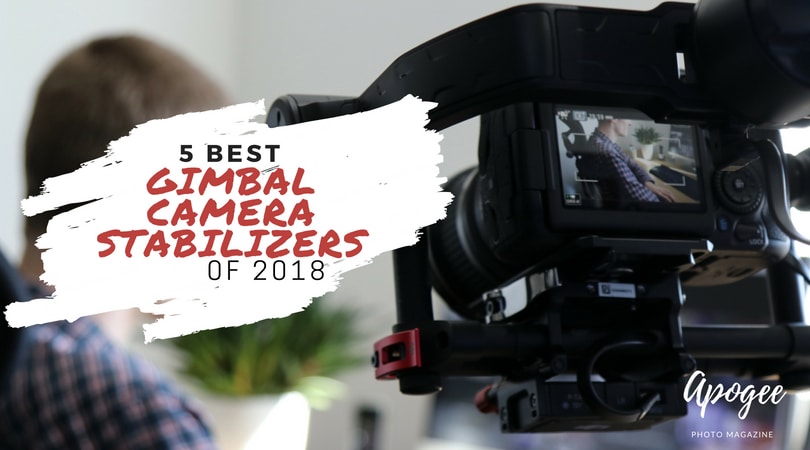 Gimbal technology has rapidly advanced in recent years, and today’s best camera stabilizers combine a lightweight and durable build with advanced control via app or joystick and the ease of use of a regular tripod. But with so many new models arriving on the market all the time, and with each one typically offering quite different features, it can be difficult to work out which will be the best stabilizer for your needs.
Gimbal technology has rapidly advanced in recent years, and today’s best camera stabilizers combine a lightweight and durable build with advanced control via app or joystick and the ease of use of a regular tripod. But with so many new models arriving on the market all the time, and with each one typically offering quite different features, it can be difficult to work out which will be the best stabilizer for your needs.
For this reason, we’ve prepared a guide explaining how to select the best stabilizer, highlighting the different features that combine to make it more convenient, easy, and effective to use. In addition to offering pointers as to what makes for the best camera stabilizers, we also recommend what we believe are the top gimbals and stabilizers on the market today at various price points.
Now, whatever your budget, and whatever your needs, you’ll be able to give your camera work the smooth and fluid look of the professionals.
Why Use a Camera Stabilizer or Gimbal?
The optical image stabilization built into cameras and lenses has advanced massively in recent years, and when combined with good walking technique can make for some surprisingly smooth and stable handheld footage. But even the most skillful camera operator will not be able to avoid camera shake entirely when filming unassisted.
The addition of a camera stabilizer or gimbal to your shooting rig is one of the simplest things you can do to improve the quality and professionalism of your videos.
Not so long ago the options for camera stabilization were somewhat limited and invariably expensive and inconvenient to use. Indeed, for the best part of 30 years, the only real options were using a dolly – often with an inconvenient track to be set up – or hiring a Steadicam operator.
This has all changed: now fluid, floating camera work is within easy reach of even low-budget and beginner filmmakers. Now there are even Steadicam DSLR and smartphone stabilizers!
What this means, though, is that anyone still producing unintentionally jerky videos today will look somewhat amateurish. A good camera stabilizer will add a slick, professional touch to your videos while also opening up an array of creative possibilities.
Important Points to Consider When Deciding Which is the Best Camera Stabilizer for Your Needs
#1 – Balance
It almost goes without saying that equipment designed to provide stabilization needs to be well balanced itself if it is to serve its purpose. Check that the model you are considering purchasing is easy to balance.
This means maintaining a balance between gimbal and camera, but just as equally between yourself and the entire rig. A gimbal that doesn’t maintain good balance, or is overly difficult to set up, is virtually useless.
Before you can use your new stabilizer, you will first need to calibrate it to your chosen camera/lens. This shouldn’t take long and is necessary to guarantee that the rig is well balanced and will work smoothly and steadily with the camera.
Now, provided you continue using the gimbal with the same camera and lens combination, you’ll just quickly need to check balance for a minute or two each time before shooting.
#2 – Weight
When deciding which will be the best camera stabilizer for your needs, you will have to consider the issue of weight very carefully. Firstly there is the matter of how much the stabilizer itself weighs, but you must also check that your chosen camera stabilizer is sufficiently strong to bear the weight of the camera(s) and lenses you wish to use with it.
The weight of a camera stabilizer can vary massively between brands and models, with some weighing well over 5 lbs. In itself, this may not seem all that heavy, but once you’ve added a camera and lens, and then spent the best part of the day holding the thing at arm’s length, you may well wish you went for a lighter model.
You should also check that the stabilizer you are considering purchasing is rated to work with your camera and lens combination safely. While some camera gimbals will happily take the strain of big pro DSLR bodies and heavy telephoto lenses, others are specifically designed for lighter weight mirrorless cameras only, and will not be up to the job of carrying a DSLR rig at all.
From the point of view of weight, the best camera stabilizers are generally those that offer maximum load-bearing capacity versus minimum weight of their own. In short, a lightweight gimbal capable of supporting a bulky camera. Naturally, though, such gimbals also tend to be among the most expensive.
#3 – Controls
The most basic camera stabilizers are not a lot more sophisticated than a selfie stick with an extra degree of mechanical control. Such stabilizers will undoubtedly provide better results than if you were to shoot photos handheld, but they will not be as smooth or as easy to use as more expensive models. Nor do they provide the same degree of control offered by the technologically sophisticated gimbals that top our list below.
Advanced gimbals are impressive feats of miniature engineering, employing silent motors to allow the user much greater precision control over the camera and its functions, typically utilizing a joystick. What’s more, some of the best camera gimbals permit the adjustment of focus using a controller wheel on the handle of the stabilizer, and often also using a dedicated app. This fully eliminates any risk of camera-shake caused by the user physically touching the camera while filming.
There is considerable variation in the degree of user control each stabilizer offers – and also in the manner in which the user can leverage this control – so it pays to consider your needs carefully and do some in-depth research before making your purchase.
#4 – Build
Clearly, any piece of equipment required to carry your expensive camera gear needs to be extremely well built. Cheaper models may seem appealing – particularly if they offer similar features to more expensive ones – bear in mind that it’s likely that the manufacturer can undercut the competition on price only by cutting corners on materials and production values. This will likely prove to be a false economy in the long term.
As with tripods, you tend to get what you pay for with camera stabilizers. After a couple of months of heavy use, a cheap, poorly made camera stabilizer might well become loose and unusable. Or worse still, actually fall apart mid-shoot: sending your expensive DSLR crashing to the floor. The best stabilizers offer rock-solid support and are made of exceptionally strong materials, however, the extra piece of mind such models provide often comes at a considerably higher price point.
#5 – Batteries
Unless you decide to go with a purely mechanical camera stabilizer, you will need to consider battery life before purchasing. The bigger, heavier, and more advanced the gimbal, the more rapidly it will drain the batteries.
Cheaper or poorly designed models may run out of juice much earlier requiring extra back up batteries. However, the best gimbals come with enough power to keep running throughout a full day of shooting before needing to be recharged.
Also check whether standard alkaline batteries power the gimbal you are considering purchasing or instead uses lithium-ion batteries, as this may also influence your decision. The matter of battery type is especially important for photographers who frequently travel because some airlines do not permit flying with lithium-ion batteries. Alternatively, you may need to check the availability of alkaline batteries at your destination.
#6 – Size
Undoubtedly, size will also be an important factor influencing your choice of gimbal or stabilizer. The gimbal should be proportionally sized to your own body (for example, check that hand grips are comfortable when held for long periods of time) but also convenient to shoot with and easy to store and pack away when traveling.
Despite being quite big when in use, some camera stabilizers will nonetheless pack away very neatly and compactly when dismantled. Such models will always be the best option for videographers who spend a lot of time on the road.
#7 – Features/Versatility
Some stabilizers are just one-trick-ponies. This needn’t be a bad thing, as long as they do what you need them to do, and they do it well. Other models offer many more features and much greater flexibility: for example, by allowing you to customize the setup with extra counterweights; an extendable central column; slide-arms; or switch between one-handed, dual-handed, and reverse-holding operation.
You may also want the convenience of a quick release plate for conveniently switching between stabilizer, tripod, and handheld shooting. And for those who frequently travel, a good quality hard carry-case for safely stowing the stabilizer will likely also be appreciated.
Extras such as these tend only to be found on the best camera stabilizers, so don’t be surprised if cheaper models lack such features.
#8 Price
There are camera stabilizers out there to suit every budget: from $50 through to $1,500. Of course, whether a $50 stabilizer will also meet your needs is another matter entirely though.
Generally, anything that costs much less than $400 or so is likely to be a simple mechanical stabilizer, while for a more advanced motorized gimbal with advanced features, such as Bluetooth control, you’ll be looking at nearer $450 and up. Finally, the very best gimbal camera stabilizers tend to be priced north of $700.
The Best Camera Stabilizers and Gimbals for use with DSLR and Mirrorless Cameras
#1 – DJI Ronin-M 3-Axis Handheld Gimbal Stabilizer
Compatibility: DSLRs, small camcorders, some M43s Mirrorless
Load Capacity: 8lbs (3.6kgs)
Battery Life: 6 hours
Product Dimensions: 500 x 210 x 420mm
Weight: 5.07lbs (2.3kgs)
While by no means cheap, a combination of clever design, durable magnesium construction, and advanced features make the DJI Ronin-M one of the very best camera gimbals available today.
This is for a very good reason: weighing 5.07lbs (2.3kgs) but with a rated load capacity of up to 8lbs (3.6kgs), this is a super-sturdy and relatively portable gimbal stabilizer capable of bearing much more than its own weight.
Perhaps more importantly, the performance is stunning: whether up and down, side to side – or indeed in whichever direction you want – movement is always totally fluid.
The M 3 can be used with a handy separate joystick controller, allowing a second person to remotely control framing, leaving the operator to concentrate only on movement and stability. Whats more, a reliable IOS app adds a greater degree of control to the M 3. For example, you can use the app to tweak the sensitivity of the M 3’s motors so that they are better adapted to your movement. The app also provides feedback regarding your balance and performance, helping you to improve with each shoot.
Despite these impressive credentials, the Ronin M 3’s batteries will run for 6 hours before needing to be recharged. While this is relatively short when compared with our second choice of gimbal stabilizer, the Zhiyun Crane 2, it’s still enough time to get a serious amount of footage in the can before the Ronin powers down. And for those in need of extra power for their camera, the M 3 also comes with P-Tap capability.
The Ronin M 3 features detachable top handlebars that can be quickly removed for easy packing and storage, or to permit several different shooting configurations – such as Underslung Mode, Upright Mode, and Briefcase Mode. The top bars also allow the user to mount various accessories on their rigs, such as a monitor, microphone, lights, or anything else you might find useful.
One of the standout features of the Ronin M 3 is what the manufacturers call Auto-Tune Stability (ATS), a method for precisely adjusting balance without the need for extra tools. This makes the M 3 a good choice for shooting on location. While the M 3 is by no means difficult to assemble or balance, this process does, nonetheless, take some time. Meaning that the M 3 is perhaps not the best stabilizer for those looking to just “run and gun.”
Finally, although not in itself all that heavy, the fact that the M 3 must be operated with two hands, and with arms and body rigidly locked, means that it can quickly start to feel a lot heavier than it actually is. Nonetheless, movement with the M 3 is always super smooth. Indeed, as far as the final results go, there’s not another product out there that comes close. For this reason, the DJI Ronin M 3 is our choice for overall best camera stabilizer.
- Ronin-M Transmitter (Controller)
- Ronin-M 4S Battery
- Battery Charger
- Handle Bar
- Turning Stand
#2 – Zhiyun Crane 2
Compatibility: DSLRs, Mirrorless
Load Capacity: 7lbs (3.2kgs)
Battery Life: 18 hours
Product Dimensions: 8.3 in x 17.7 in
Weight: 2.76 lbs (1.25kgs)
The next best gimbal stabilizer out there right now is the Zhiyun Crane 2. An altogether different beast to the original Crane and even the Crane V2, the Crane 2 is a super fast and easy to use single-handed camera stabilizer that is ideal for smooth shooting on the fly. Made of durable aluminum, the Crane 2 also weighs almost half the weight of the Ronin M 3.
In fact, while the DJI Ronin M 3 most consistently provides the best results, it is slower to set up and harder to work with than the Crane 2. The Crane 2 is also quite slim and portable when compared to the big and bulky M 3. This means that for those wanting to shoot fast, and free from restraints, the Crane 2 is probably the best gimbal stabilizer out there right now.
Helping to speed up workflow further, the Crane 2 employs a standard Manfrotto QR baseplate, so you can quickly switch to a tripod without fuss. Where the Crane 2 really shines though is in its innovative addition of an integrated control wheel, allowing the user to follow focus directly from the handle of the gimbal. Similarly, you can change ISO, aperture, etc. on the handle, and an easy-to-read LED displays the currently selected parameters.
On the downside, while the Crane 2 can also be controlled remotely from your smartphone via Bluetooth. Some users have reported that the connection is prone to occasionally dropping, even when used at a relatively short range. Also, the Crane 2’s motors can sometimes be a little jerky. So although the Crane 2 wins out on convenience, it is generally not quite as smooth as the Ronin.
These reservations aside, the Crane 2 is without a doubt one of the best stabilizers available today. Lightweight, one-hand operation makes the Crane 2 really quick and easy to use, and the fact that it is also free-standing – using three little legs – makes it a really handy and versatile bit of kit. Highly recommended for lone shooters and skeleton crews looking for fluid footage.
- 🏆【3-Level Real Time Follow Focus】: Package Includes A Free Servo Follow Focus Unit for . Crane 2 Allows 0. 02° Precision Control for Autofocus Lenses Through Camera Cable Connection(For Canon Currently)
- 🏆【7lb. Maximum payload】: support camera weighing 1. 1lb to 7lb like Canon EOS series/Panasonic Lumia series/Sony lice series a Series/Nikon D Series. You can also contact us for confirmation for your set up if you're unsure about it
- 🏆【UNPARALLELED ANTI-SHAKING STABILIZING】: 32-Bitx3 High-Speed MCU Parallel Control, 100% Improvement in Respond Speed, Pro-Grade Image Stabilization
- 🏆【Ogled display & 18hrs long runtime】: easily identify the connection status, battery level, control mode and multiple camera prams; the crane 2 allows real-time charging to the camera even when your camera is without batteries
- 🏆【12 Months 】: 12 month
#3 – Feiyu MG Lite V2 3-Axis Handheld Gimbal
Compatibility: Mirrorless
Load Capacity: 3.59lbs (1.63kgs)
Battery Life: 6 hours
Product Dimensions: 267 x 120 x 318mm
Weight: 1.95lbs (0.887kgs)
An ideal choice for vloggers, casual filmmakers, and Youtube sensations alike, the Feiyu MG Lite V2 Handheld Gimbal is a sturdy, lightweight and affordable option for rapid, non-invasive shooting on the move. Designed specifically for use with mirrorless systems, the MG Lite V2 has a universal mounting plate that is compatible with virtually every model of mirrorless camera currently on the market.
Despite its lightweight build and discreet profile, the MG Lite V2 comes with 360-degree limitless motors and slide arms. Users can select from several operating modes including one-handed, dual-handed, and reverse-holding. The gimbal is gripped utilizing an ergonomic handle and control comes via a built-in joystick, permitting manual angle changes. A dedicated app can further control the MG Lite V2.
Set up is quick and easy, with the balance achieved by shifting the camera slightly on its axes and then tightening the lock rings. Once done, the camera will sit firmly in place, and you’re ready to start shooting some super smooth footage. With a battery life of up to six hours, the Feiyu MG Lite V2 is just a great all-around lightweight gimbal for general use, and definitely one of the best gimbal stabilizers in this mid-range price bracket.
- MG Lite is one kind of 3-axis handheld gimbal especially for mirrorless cameras. Suitable for Sony NEX-5N/NEX-7 and other N-series, for Sony A7RⅡ/ILCE-7R/ILCE-5100, for Canon 5D MarkⅢ(with short lens), for Panasonic GH4 and other cameras with silimar dimension with weight less 1200g.
- Panning / Tilting / Rolling 3-axis 360 degrees coverage, giving you ultimate experience while using the MG Lite for shooting.
- Panning mode, panning and tilting mode, lock mode can be easily switched by pressing the function button.
- You can download and install the USB driver and the software for upgrading the latest firmware from www.feiyu-tech.com.
- Comes with a dual handheld grip bracket kit. It can be equipped with Zhiyun Crane V2 gimbal, which is a tailor-made tool, sparing more room for creation with both hands.
#4 – Glidecam XR-PRO Handheld Camera Stabilizer
Compatibility: DSLR, video cameras
Load Capacity: 10 lbs (4.53 kgs)
Product Dimensions: 231 x 99 x 500mm
Weight: 2.1lbs (0.95kg)
The Glidecam XR-PRO is a lightweight and affordable camera stabilizer capable of bearing loads well above and beyond its own weight. Although the Glidecam XR-PRO is not especially recommended for lighter cameras and is undoubtedly better suited to heavier DSLRs and mid-sized video cameras, it can nonetheless be used with smaller formats such as a GoPro.
This is an entirely mechanical, nonelectronic, gimbal; therefore all the controls are manual, and there is no app available. However it is easily controlled by hand and, despite the simple mechanical mechanism, the results are nonetheless excellent.
Some tools are required to assemble the Glidecam XR-PRO. For this reason, it’s better always left intact, meaning of course that it doesn’t pack away particularly small. Also, achieving balance is a little time consuming, but once this has been done it works beautifully. And just as so long as you don’t change your camera and lens combination, balancing the rig will be much quicker next time around.
In fact, despite the lack of motors and other electronics, the Glidecam XR-PRO is extremely effective. Certainly, if up until now you’ve been struggling to shoot tracking shots handheld or just using a monopod, your takes will be revolutionized by the use of XR-PRO. Competitively priced and surprisingly easy to operate, the Glidecam XR-PRO is one of the best camera stabilizers for serious filmmakers looking for a quality solution on a relatively limited budget.
- This Item Includes: Glidecam XR-PRO Handheld Camera Stabilizer - 14x Large Counter Weight Discs - 4x Small Counter Weight Discs - 4x Large Camera Platform Weight Plates - Glidecam Warranty
- Dynamic Camera Balance Platform (Camera Mounting Platform)
- Adjustable convergence, precision, three-axis Gimbal
- No-tools Telescoping Center Post
- Adjustable, inertial-control Base Platform
#5 Ivation Pro Steady DSLR Shoulder Stabilizer Rig
Compatibility: DSLR, Mirrorless, video cameras
Load Capacity: ND
Product Dimensions: Folded: 12.0 x 6.5 x 3.5″ (30.5 x 16.5 x 8.9 cm)
Weight: 2.4 lbs (1 kg)
The Ivation Pro Steady DSLR Stabilizer is a great solution for vloggers and filmmakers on a truly rock bottom budget. While you certainly don’t get any of the bells and whistles of more expensive stabilizer systems, nor even some of the more basic mechanical features of even mid-range gimbals, what you do get is a versatile and customizable camera stabilizer. If this is your first step into working with a stabilizer, it will already change the quality of your tracking shots hundredfold.
In fact, though, the Ivation Pro Steady DSLR Shoulder Stabilizer is not technically a gimbal stabilizer at all, as it doesn’t employ the rotating 3-axis system of a true gimbal. Consequently, you shouldn’t buy the Ivation expecting to achieve the truly fluid, flawless sequences produced by something like the Crane 2 or Ronin M 3 above.
Instead, the Ivation provides extra stability through two sturdy handheld grips and by a rear arm extension that can hook over the user’s shoulder or be configured in a variety of other ways to adapt to different shooting situations.
Despite this somewhat basic system, results are surprisingly good and will certainly prove much better than just trying to shoot handheld without any weighted stabilization device. This makes the Iviation a great entry-level camera stabilizer that will work with pretty much any camera, and at a really good price.
- Transformable design for different shooting style
- Small (folded) & compact design that you can carry it around easily
- All hand grips and joint are rotatable and adjustable
- Non-slip rest pad on all hand grips
- Extendable rear arm
Conclusion
A camera stabilizer can make the difference between a sloppy and amateurish-looking production and a fully pro-level video, allowing you to shoot slick and polished footage.
When choosing the best gimbal or stabilizer for your needs and budget, it’s likely that the first decision you will need to make is whether to go for a mechanical or electronic/motorized model. However, even within these categories, there are many other variables to consider. Precisely which features you should prioritize will largely depend on your own particular videography needs and budgetary limitations.
For truly fluid footage, the very best camera gimbals can easily cost several hundred dollars. And given the exceptional results of gimbals such as the Crane 2 and Ronin M 3, the expense is probably justified. However, as we’ve seen, there are also some good options out there for achieving pretty smooth results for a lot less money. This means that unless you’re deliberately going for a Blair Witch-style “Shakycam” look, there’s really no excuse for producing jerky and jarring videos anymore.
By following our gimbal buyer’s guide, you should now be in a much better position to choose the best camera stabilizer for your particular filmmaking needs.





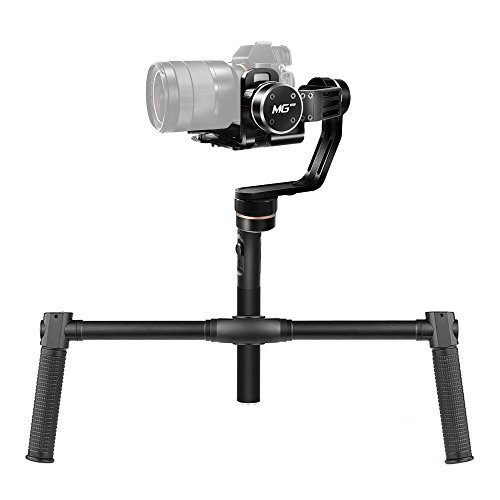





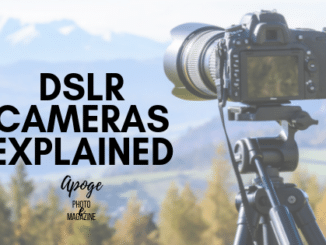
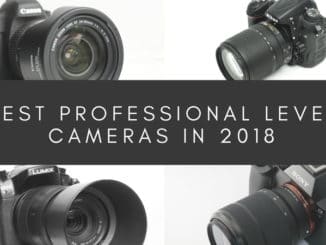
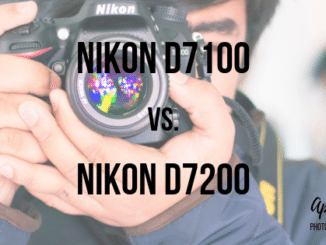
I have been searching for a limited-budget DSLR stabilizer for a long time. I am delighted to say that today I found what I was searching for.
Thank you